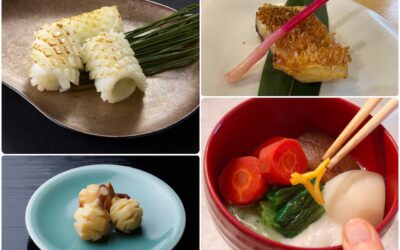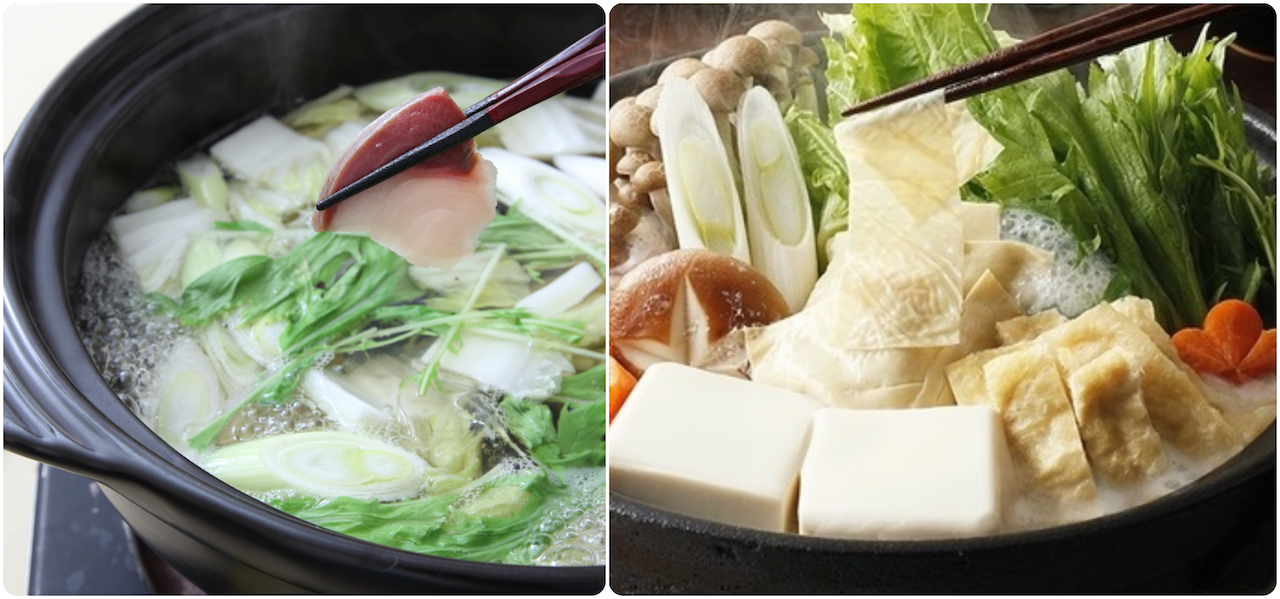
Swished-through-bubbling-broth Buri Shabu Nabé (left) and Shōjin Shabu Nabé (right)
しゃぶしゃぶ鍋
Shabu Shabu Nabé
This Kitchen PROJECT is about making Shabu Shabu Nabé hot-pots in YOUR kitchen.
The Japanese have a fondness for naming dishes with onomatopoeia. The name shabu shabu derives from the sound (shabu shabu) of ingredients being SWISHED through bubbling hot broth. The barely poached tidbits are then dipped in taré (sauce). Yakumi (condiments) such as grated daikon radish, ginger, and/or minced green onions can be set out for each person to use as they wish to enhance their taré.
Although most versions of shabu shabu include tissue-thin slices of meat, the main recipe for our nabémono hot-pot at Kitchen Culture is for Buri Shabu Nabé that features thin, fresh slices of fish cut from the loin of yellowtail (buri).
For those who eat plant-based foods exclusively, and others who would like to increase their consumption of non-animal foodstuffs, I have developed a special shōjin version of shabu shabu.
Vegetables, mushrooms, tōfu in many forms, and nama fu (wheat gluten, in blocks and decorative shapes) are simmered in a deeply flavored sankai dashi (kelp-and-mushroom) broth. In this vegan shabu shabu HOSHI YUBA, dried sheets of soy milk, are swished through the broth; they soften quickly to a slightly chewy, meat-like texture.
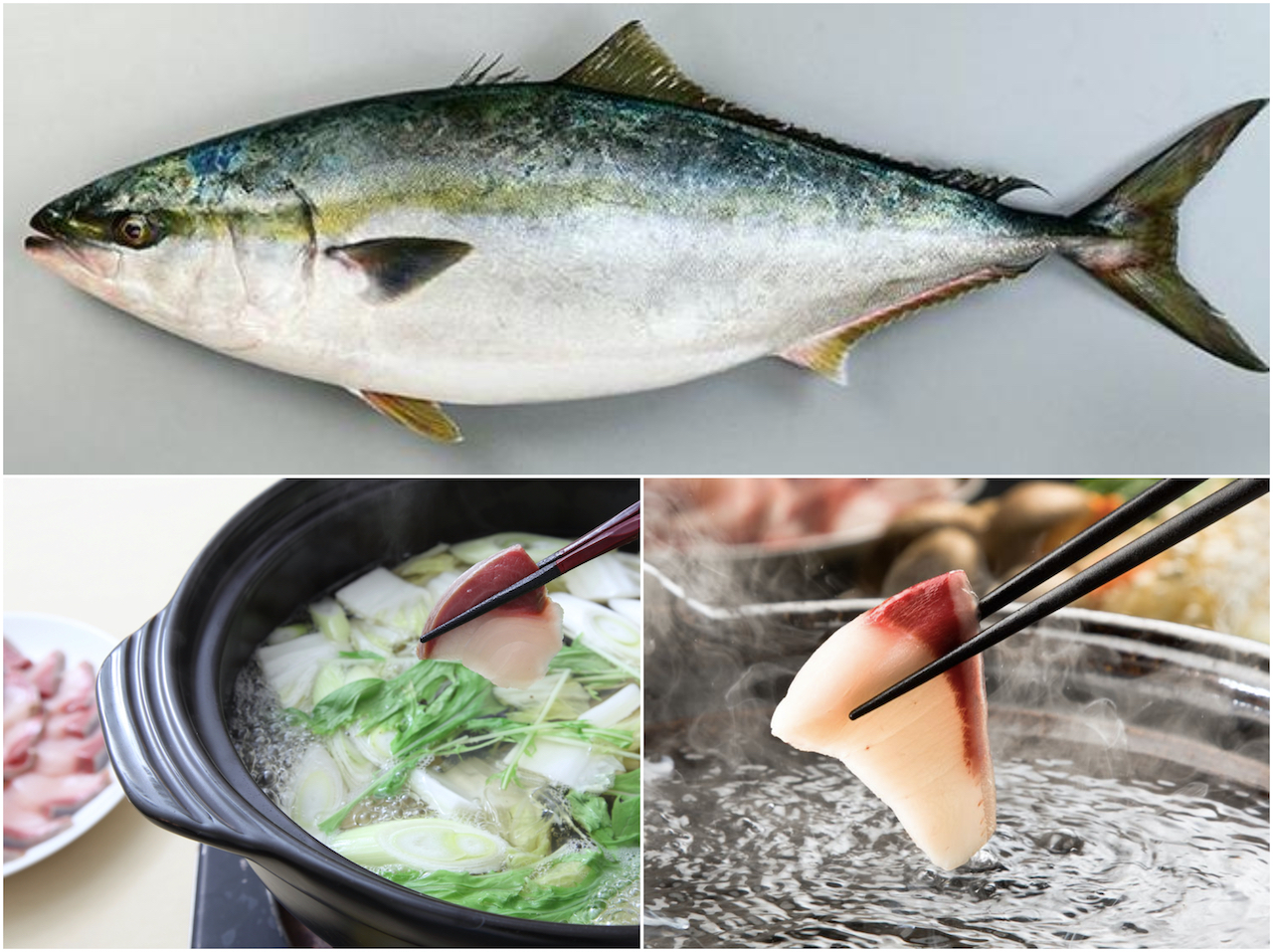
BURI (yellowtail) is fabulous in the winter! If you can source top-quality tenderloins you could opt for luscious slices of buri served as sashimi, but … my favorite way to enjoy fresh buri is swished-through-bubbling-broth buri shabu – barely poached slices of yellowtail that get dipped in ponzu. The richly flavored broth that remains in the pot afterwards makes divine ozōsui porridge, a perfect shimé finish to the meal.
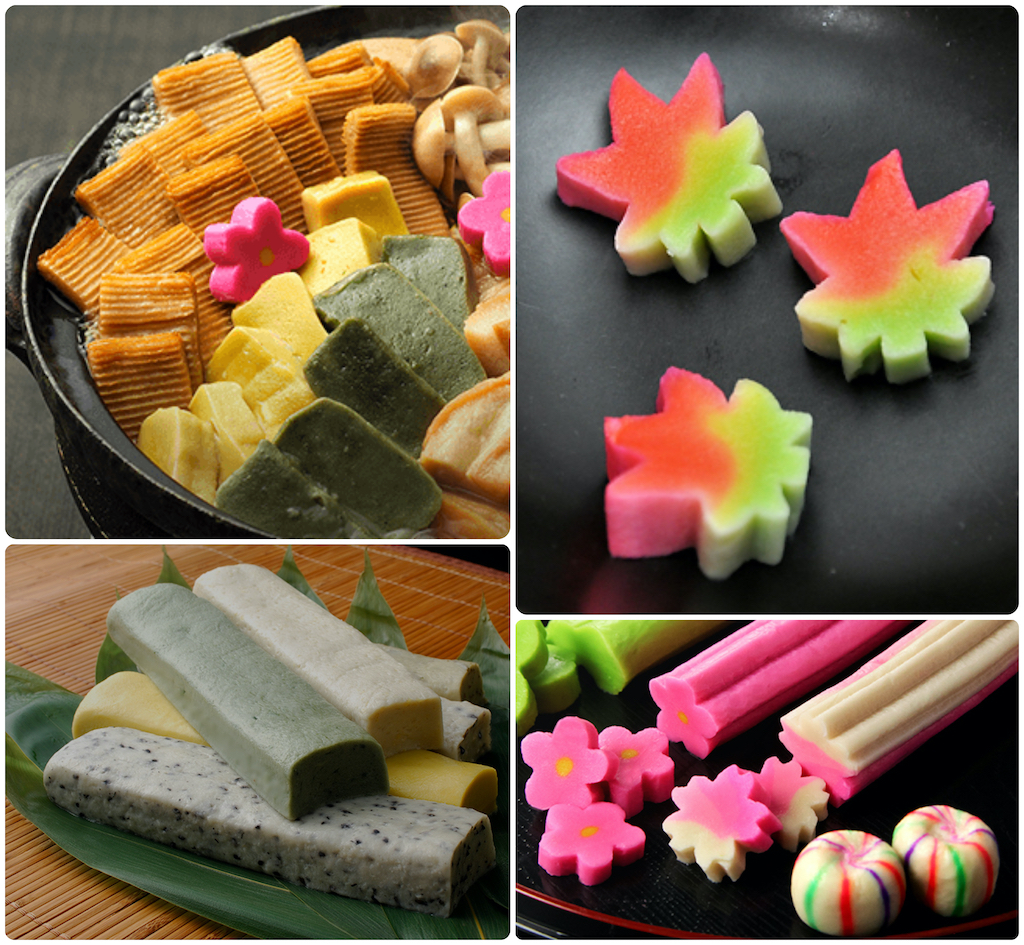
About 生麩 NAMA FU...
Nama fu (wheat gluten) is made in blocks and various decorative shapes, many seasonal motifs. Otside Japan they may be a challenge to source. Highly perishable they must be stored in the refrigerator. Often imported frozen from Japan in vacuum-sealed sticks, once defrosted they should not be re-frozen.
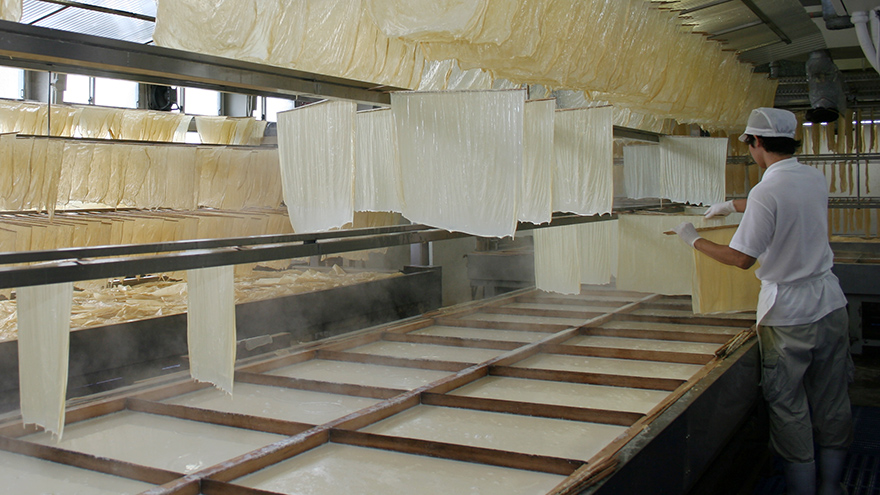
About 湯葉 YUBA...
When soymilk is gently heated a film forms on the surface as the soy proteins coagulate (similar to the milk protein “skin” that can form on puddings and custards). The Japanese call this soymilk “skin” YUBA. Freshly formed skins are lifted from the vats of warm soymilk and set to dry on sticks.
The dried HOSHI YUBA is shelf stable. You will find SHEETS, ROLLED CYLINDERS and BUNDLES (sometimes tied with kombu threads) sold in many Asian groceries. Kyoto is famous for its yuba, both fresh (nama yuba) and dried (hoshi yuba).
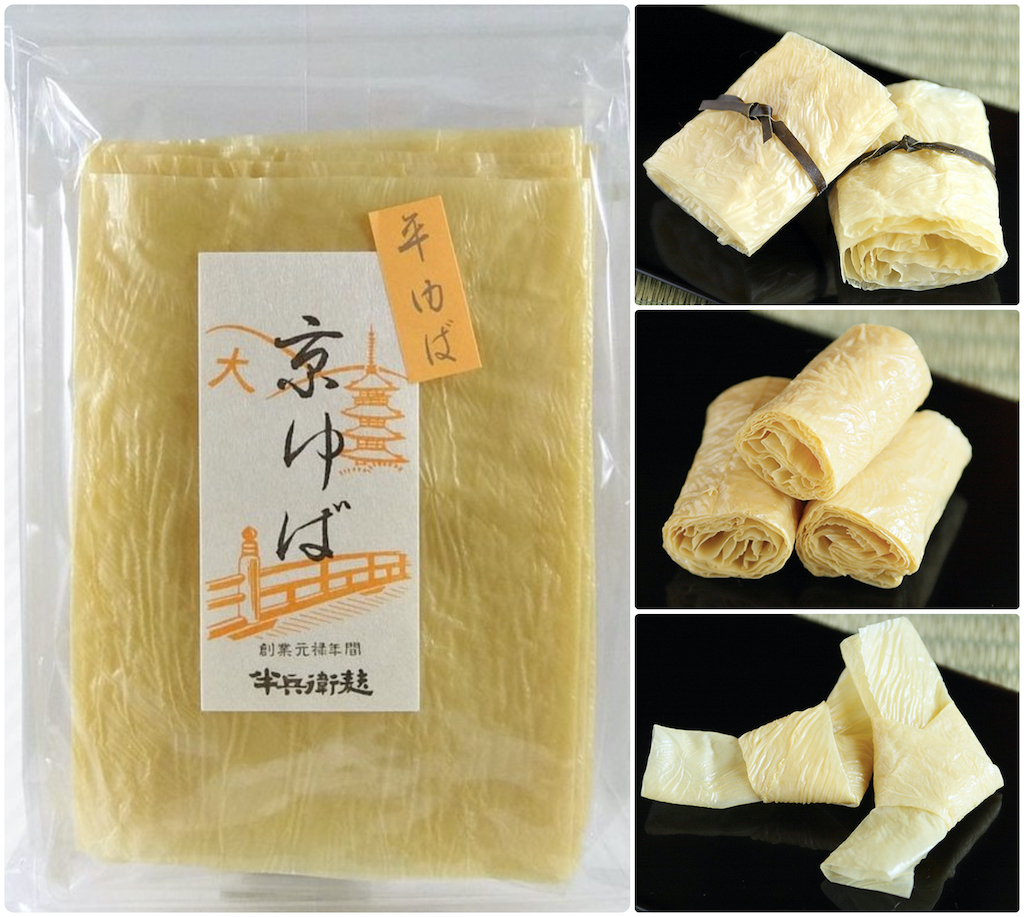
More information about BURI fish can be found on the Kitchen Culture blog post
and in my January 2022 newsletter.



